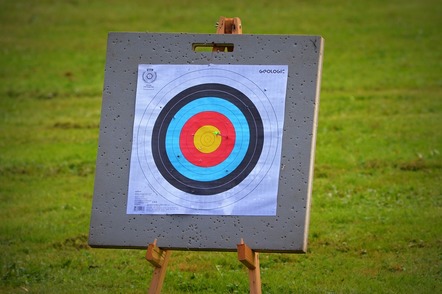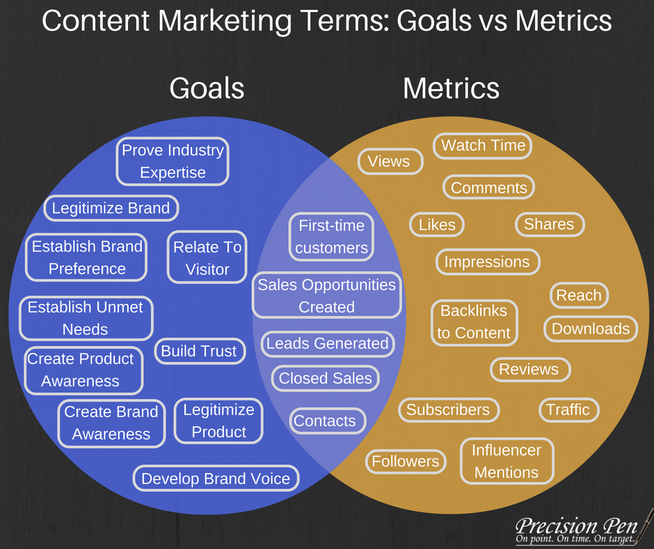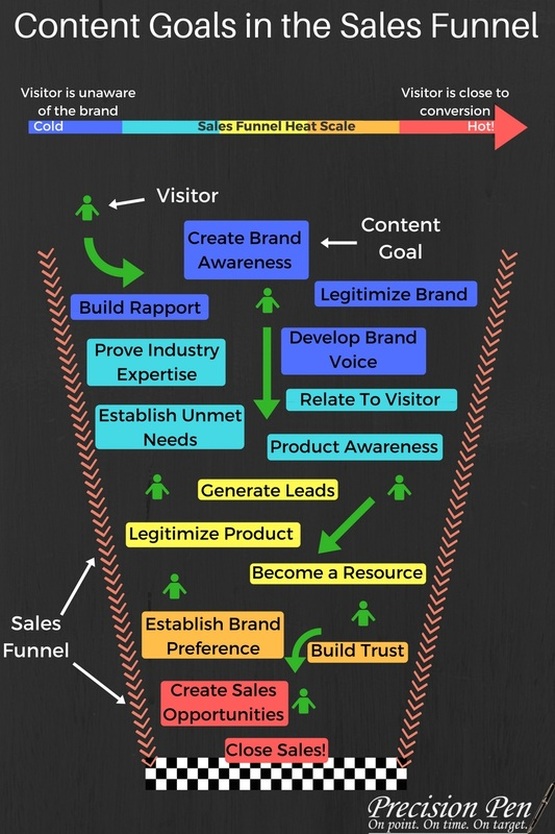|
In this post, I'm going to attempt to clarify the lines between content goals and content metrics. Then, we'll discuss my process for how to set content goals that lead your visitors to purchase decisions. If you are just now jumping in, I'd recommend reviewing my earlier post about a prevalent problem with today's content marketing mindset - a strategic focus that has shifted away from sales goals and towards higher metrics numbers. To summarize, when we focus on metrics, marketers design content to "go viral", getting tons of likes, shares, and so on. Sometimes it does, usually it doesn't, and ultimately it targets visitors at the top of the funnel, doing little to drive conversion. When we focus on goals, there's still some viral content, but there's also a significant amount that doesn't have a broad appeal, targeting visitors that are further along the sales process and pushing them towards a purchase decision. How a metrics focus misses the big picture To get an image of goals versus metrics in your mind's eye, think about a sprinter that is trying to set a new record in the 100-meter dash. What the sprinter hopes to do is their goal: not only win, but to win by a greater margin than anyone has before. How that goal is measured is the metric: milliseconds on a stopwatch. When the sprinter is goal-focused (as content marketers ought to be), they run hard and fast, stay within the lines, take off only after the gun fires, and so on. But as I discussed in the last post, content marketers have lost sight of the overall goals of their content. If our sprinter were to totally lose sight of their goal and focus on the metrics, they might start to cut the corners of the lines for a faster time. You may see them try to get a running start. Of course, when too much of a focus is placed on metrics, the sprinter may get a "better" time, but will never reach their goal because the metric score has been cheapened by cheating. To remedy the blending of content goals and content metrics, it's helpful to intentionally separate the two with some (not exhaustive) examples: On the left, you can identify a variety of legitimate goals for content. All of these goals will support making a sale down the line. On the right, you'll find some examples of metrics. Metrics are forms of measurement, and while high numbers are cool, they don't necessarily drive conversion. In the middle, you'll see the examples of overlapping goals and metrics. This overlap usually occurs near the bottom of the sales funnel, where sales goals become much more concrete and can be quantified by numeric values. Let's completely forget about metrics (for now) Again, while metrics are important, they are measurements of the goal, not the goal itself. Before even starting a content piece, we should ideally have set one or more content goals. In the words of renowned author Stephen Covey, "Begin with the end in mind". Defining which metrics are best for a content piece depends on your topic, call to action, format, platform, budget, and more. Ideally, we should figure out what to do before we decide how to execute and measure it, so let's first look at different goals that will nudge our visitors down the sales funnel: Above you'll see a sales funnel with a sampling of content goals inside. As your visitor (little green person) begins to interact with the brand, certain goals (call them steps, milestones, phases, levels) must be achieved for them to move down your sales funnel - especially in the B2B world.
At the bottom of the graphic is the endgame - closing sales. But your visitor isn't going to just buy from you right out of the gate (unless you're Comcast and Cox isn't available). You have to get them through that sales funnel. Even if these goals aren't all met consciously in the visitor's mind, they generally have to be met before someone hands you their credit card info. How to assign content goals appropriately There's definitely a method to the madness here. You don't want a content goal of "closing sales" if the visitor hasn't even heard of you yet. That's an extreme example, but it makes a point: the content goal should match where the targeted visitor is in the sales process. That leads us to two very important notes:
"What needs to happen to/for the (target audience) at the (position in the sales funnel) that will help them move through the sales process and closer to a purchase decision?" The answer(s) to that question are your content goal(s) for the piece. Now that one or more clear goals have been defined, read my next article as you move on to the "how". What will your content actually do to accomplish your goals?
0 Comments
Leave a Reply. |
Luke Hastings
I increase profit and market share for businesses across the U.S. through conversion-focused copywriting. Let's talk about how I can do the same for your business. Archives
March 2017
Categories |






 RSS Feed
RSS Feed
